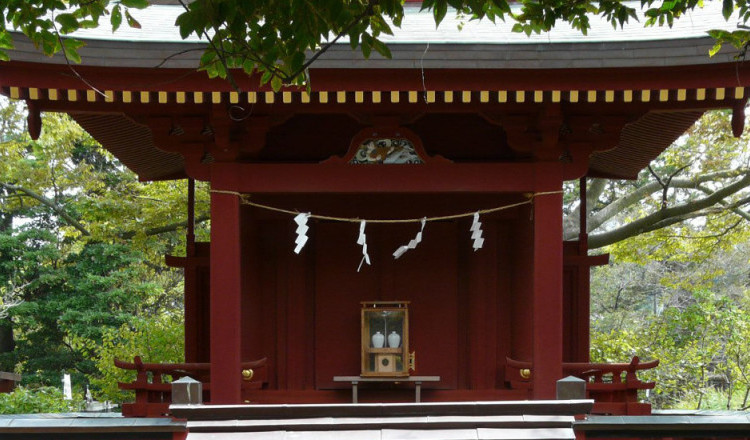Kamakura is a place with a rich history. The more, that for about 140 years it was the capital of Japan. It is located in the Kanagawa prefecture between the mountains: Genji, Rokkokuken, Ohira, Jubu, Tendai, Kinubari. Thus, around the city one can find many hiking trails of various difficulty levels. With great weather and a little bit of luck, tourists can also see Fuji. Moreover, Kamakura is situated on the Sagami Bay. It is next to the beach that one may come across the tourist hotels, and their friendly guests. The sea often throws on the sand shells the size of those, that in Poland one can only get in souvenir shops. In the Sagami Bay young Japanese often practice windsurfing, which is a very popular sport among young Japanese people, although it does not beat baseball. Nevertheless, Kamakura is a very modern city, which is full of historical buildings and beautiful gardens.

Bamboo forest in Hōkoku-ji
Before you enter the temple, which is good manners
Good manners in Japanese temples are almost identical to those expected in any other temple. However, I believe that it is essential to strongly emphasize certain rules in order to avoid unpleasant for both sides situations. Remember that the temple is not only the building itself, but also the land surrounding it. It is not proper to:
- smoke
- behave extremely loud
- run
- litter (if there is no trash can, you should take your litter with you)
- use the phone (unless in a secluded location off the beaten track)
- use shoes in places where you shouldn’t (in those places, usually near the entrance, are located shelves for shoes; remember about having nice socks)
- omit the ritual of purification, if at the entrance to the temple is a special fountain (details below)
- interfere in rituals (by for ex.: laughing, using camera flash, making multiple photos with shutter sound on)
- photograph in places where it is prohibited (in most cases you can make photos everywhere, but there are places where you should not do this – look for information signs before you use the camera)
- take pictures of Japanese (if they are not cosplayers, it will not please them)
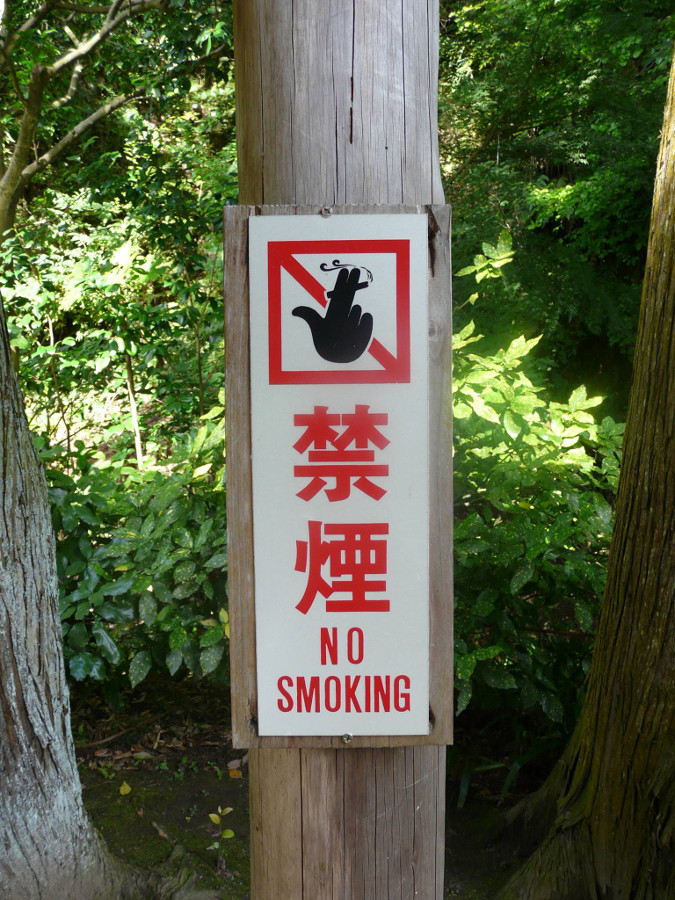
Found at one of the temples
The abundance of temples
I tried to find on the internet an accurate information on the number of temples in Kamakura. The only information that I found was “many”, and it definitely is not far from true 😉 If you plan to visit Kamakura and visit all the temples in one day, then prepare yourself that you will probably not succeed 😉
My first step in Kamakura was taken at the Kita-Kamakura Station. At first, I went to the small nearby temples. Some were very well hidden, and did not have too many visitors, which made me happy. Entrance to most of the temples is possible for a fee – the price usually around 300 yen per person. Each shrine has its own garden and is surrounded by trees, shrubs and flowers, which are particularly useful during the summer. In the larger temples one can find fountains with drinking water.

Engaku-ji – the entrance
Sometimes tourists have to use the designated trail, but most of the temples allow their guests to choose their own, spontaneous path. It was in one of the tiny temples where I was honoured with a guided tour – I was the only guest who visited the place at the moment. For this reason, the Japanese man who was guarding the temple decided to show me around the sanctuary, so I will not omit anything 🙂
I liked the most the Engaku-ji: a Zen temple, which has the largest bell in Kamakura (the bell is also a National Treasure), and Hōkoku-ji where for the first time in my life I ventured into a bamboo forest. One of the biggest tourist attractions of Kamakura is a huge metal statue of Buddha, into which one can enter. I, unfortunately, was not given the opportunity to see it.
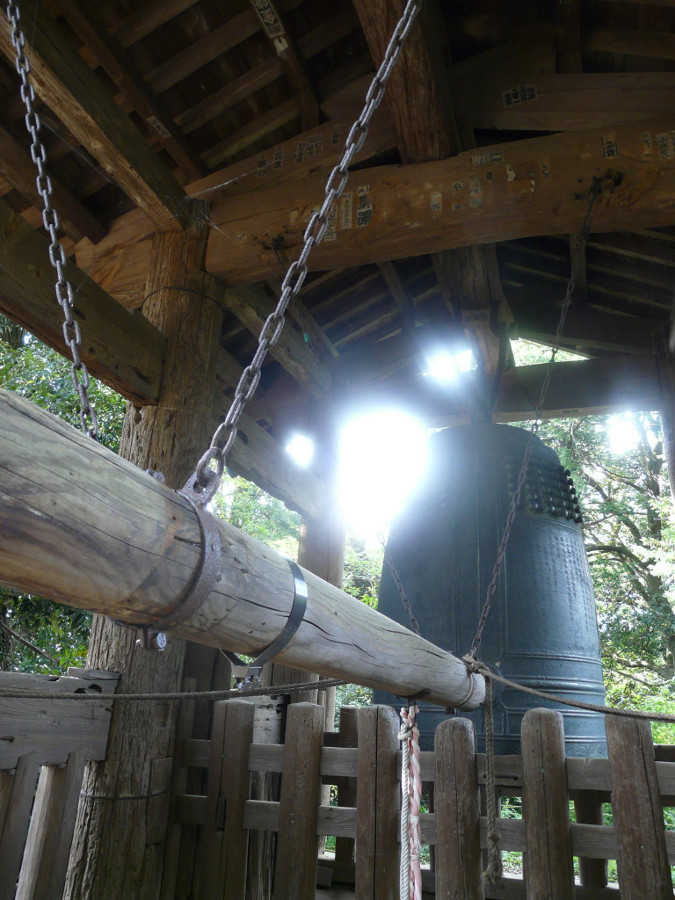
The Bell – National Treasure
Traditions and rituals
Before the entrance to some temples one can find a purification fountain. It can be recognized by ladles that are used for purification. Firstly, take the ladle and fill it with water, rinse your left hand. Secondly, fill the ladle with water again, and rinse right hand. Then pour some water into the cupped palm of hand, fill your mouth. Do not swallow the water: you only need to rinse your mouth. Water should be spit out beside the fountain – under no circumstances spit it into the tank. At the end of the ritual wash the ladle by letting the water drip from it in the direction of your hands. The ladle should be left in the place where you found it.
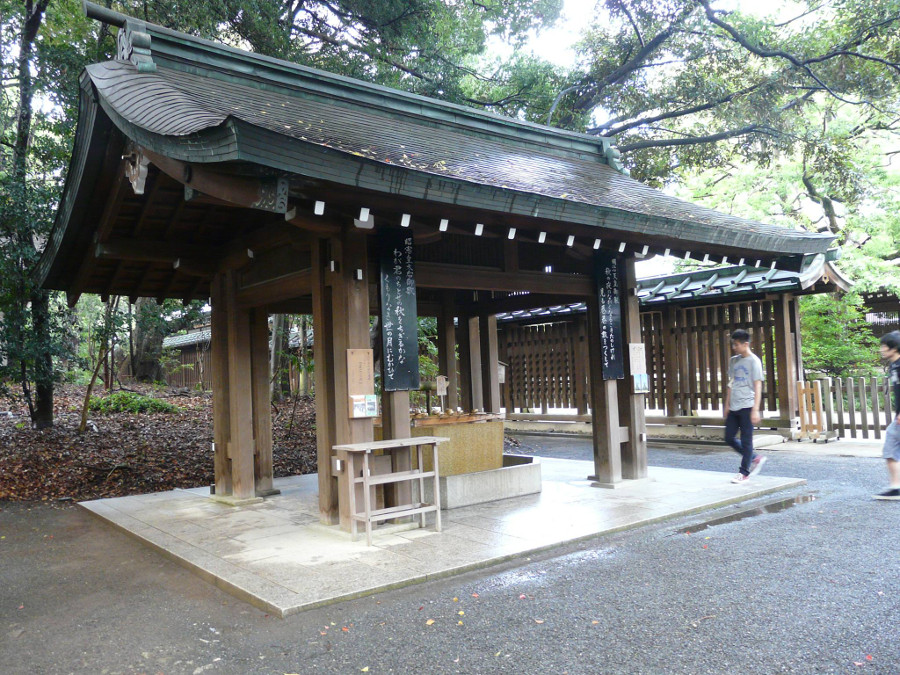
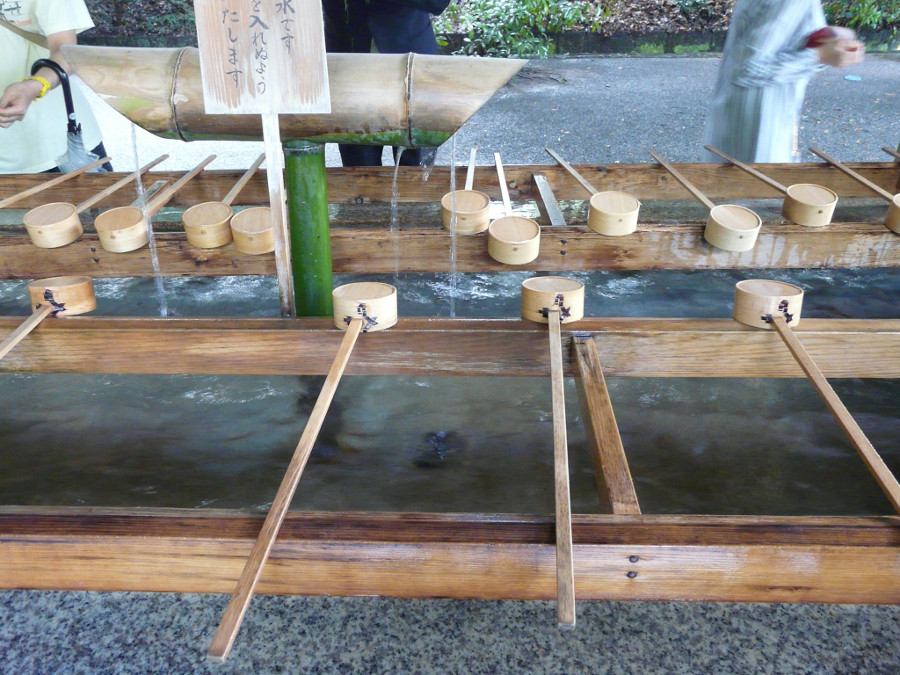
Purification fountain
In Japan contact with gods is very direct and joyful. Before places requiring a moment of silence, contemplation, and prayer are set offering boxes. You should toss a coin into it, clap your hands once, say a prayer. If a place is located inside the temple you have to toss a coin, bow twice, clap your hands twice, bow once more, use the gong, and then pray. By using the gong you assure that the god will pay attention to you praying, and certainly hear the prayer. Another way of prayer is an burning of incense. Typically incense is sold near such places. Light the incense, let it burn for a few seconds, and then extinguish it by waving it in the air – never by blowing. At the end of the ritual put the incense into the incense burner, and fan some smoke in the direction of your body. The Japanese believe that the smoke has the power to heal, so it is recommended that during the visit to the temple one fans the smoke to the hurt place to allow it to heal faster.
In some temples, you may come across items unheard of in Europe, such as Mizuko Jizō figurines. They are stone figures devoted to unborn children, aborted, miscarriaged, stillborn, and children two years of age whose future on the earthly vale is uncertain. The parents use the figurine at the funeral ceremony. Its role is to represent their deceased child. It can left either at the cemetery or at a home altar. Mizuko Jizō are given sacrifice to serve as food for the soul. It is not a coincidence that the figurine’s name is associated with water – this is related to the Japanese belief that all life comes from water.

Mizuko Jizō
Shopping street
Kamakura shopping street is a must-see place. In my opinion, in Kamakura there really are two shopping streets, one beside the other, but who would like to fall into polemics with the guide books? 😉
At the mentioned street you can find the proverbial “soap and jam”, plus hordes of tourists and natives. I bought some souvenirs there, but my main expense was pink-green ice cream that was green tea and sweet potato flavored – yummy! The range was also vanilla, and blue ones soda flavored, but green tea and sweet potato in my rankings was number one.
Prices of souvenirs were quite high, except for two stores, which were full of discounts. If someone wants to buy something luxurious for the price easy to swallow, they should visit Kamakura on Sunday. It is so because on some Sundays it is possible to find organized flea markets. It is not difficult to reach them, because they are usually located in prominent public places such as temple squares. It is said, that there you can find good porcelain, old coins, silk kimonos, and many other beautiful gifts.
Next week we will continue to stay in the area, and more specifically: see the island, which is ruled by cats! See you there! 🙂

